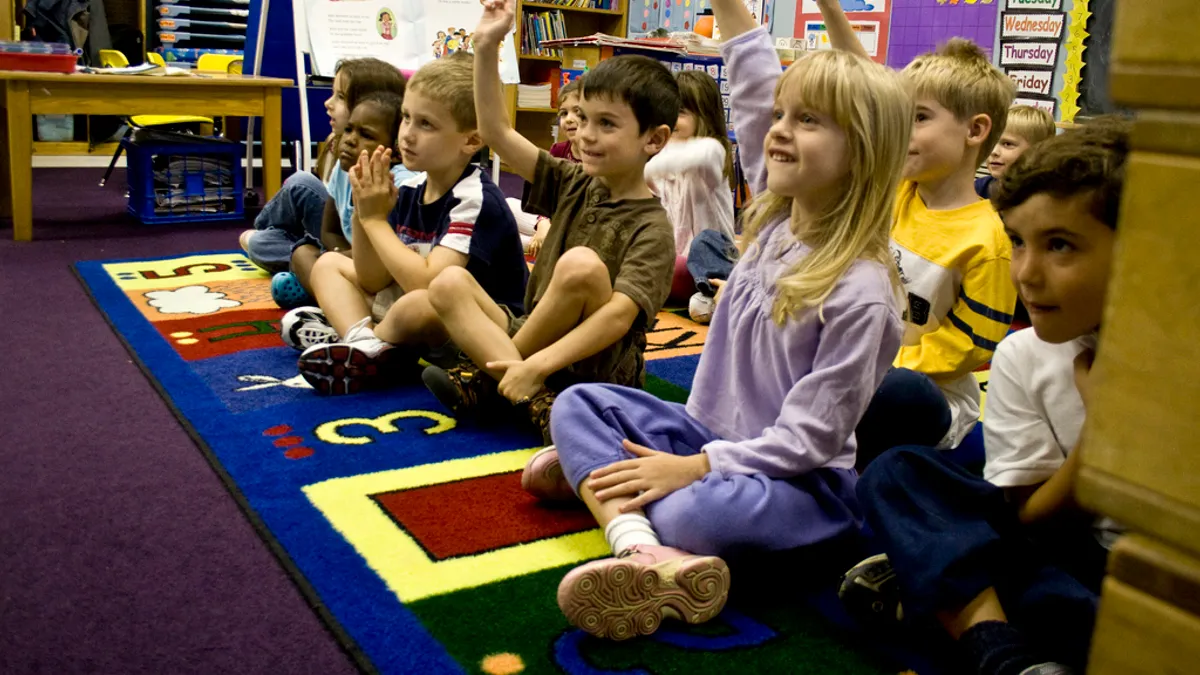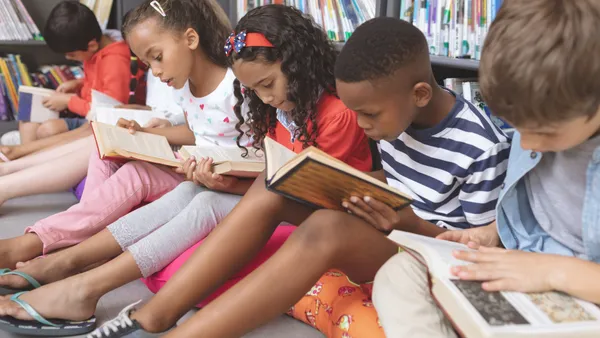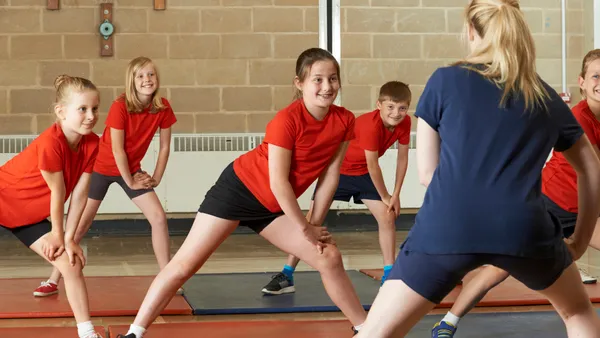Dive Brief:
-
According to researchers at the University of Missouri, who examined test results from 350 students at six elementary schools, a kindergarten readiness test can accurately predict how well a student will do 18 months later, District Administration reports.
-
The readiness test is a tool designed to help teachers create lessons and intervention plans for those whose results indicate they will have difficulties, and parents can participate in the process by teaching their child school-ready behaviors like taking turns and following directions.
-
Kindergartners with lower test results were more likely to exhibit disruptive behavior and have lower reading scores, and Special Education Professor Melissa Stormont notes kindergarten is a critical period that launches students toward longterm academic success, making identifying struggling students all the more important.
Dive Insight:
Early-childhood education is a critical but often overlooked component in students’ academic development. As a result, gearing future students up with more pre-K opportunities is something superintendents are often expected to oversee. To set the pace, AASA, The School Superintendents Association, is conducting case studies to analyze the needs of young learners before they set foot in public schools.
Three current case studies include examples of superintendents working with community preschools, overseeing programs for 5-year-olds, and working with other community organizations to make sure early-childhood education sets future students on the right path for the rigors and expectations of kindergarten.
The Perry Preschool Project, which began in the 1960s, exemplifies the importance of such programs and also demonstrates the longterm benefits. Participants are now in their mid-50s, and evidence shows this cohort provided more stable homes for their children than similar adults from that era who didn’t participate. Possibly as the result of the stable homes, the children of this group were much more likely to graduate without being suspended, addicted to substances or arrested. These children were also more likely to be employed later in life.
Funds spent on public pre-K programs in 44 states, the District of Columbia and Guam topped $8 billion for the first time last year. However, 18 of these states are using a federal grant program that will expire soon, and there has been little enrollment growth, though last year also saw Montana and North Dakota operated pre-K programs for the first time. Enrollment varies from state to state, from 85% of 4-year-olds in the District of Columbia to less than 10% in 11 states that include Minnesota, Delaware and Arizona.













